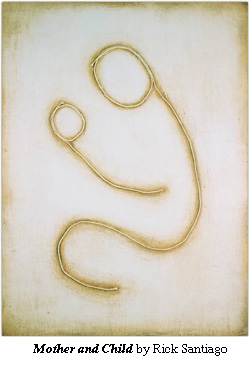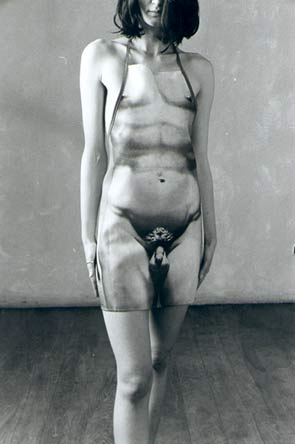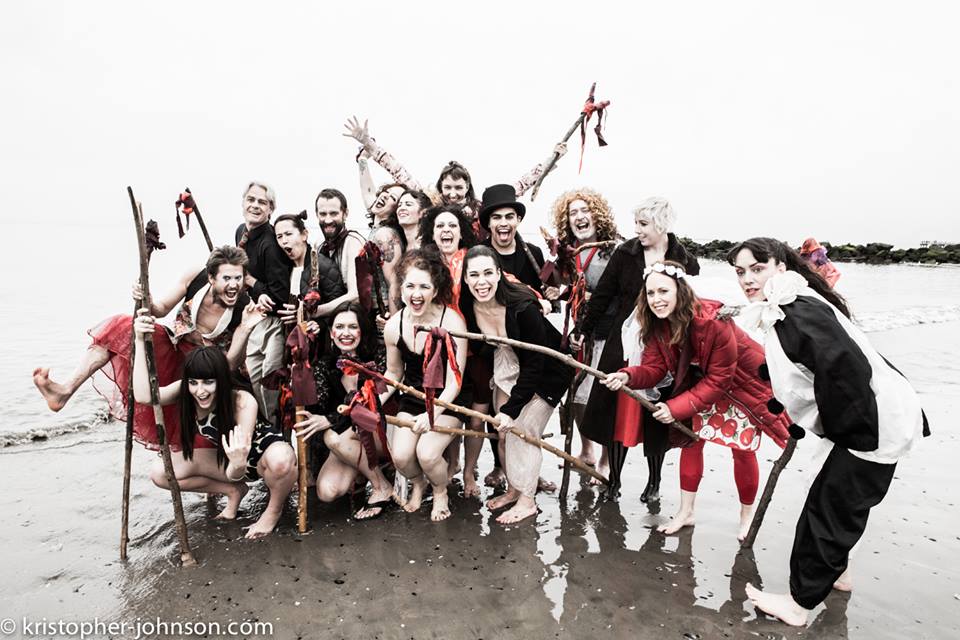Andreas is right when he says this is complicated. Usually when we talk about a Brechtian actor or Brechtian performance, we’re stuck with opening up a very dense can of worms that is the Brechtian paradigm, the whole “historical materialistic perspective.” It would be nice to bypass all that and start getting at some acting and performance alternatives to naturalism that reference Brecht but don’t get all bogged down in theory.
Of course this play about how capitalism has infiltrated the most personal parts of our lives happens to also be the most Brechtian of subjects, which should serve any referencing of Brecht we ultimately decide on. From talking with Petra and Stephan, they also understood how this Brechtian perspective might be interesting to an American audience, if not to a German one. I think in many ways this could become the real heart of the aesthetic to explore in the production. We’ll give the Germans the inheritance of Brecht and the Americans the inheritance of realism via O’Neill, Miller, Williams, etc. and have the core investigation of the project by the ensemble exactly this dialectic.
Kathleen is probably the best character to examine in this discussion. From a purely psychological dimension, the text gives her the most baggage. But if we just keep her on the psychological level, we miss how her “gestus” informs the larger picture.

Kalowski is not just Kathleen’s unknown father, but as “the German,” the ultimate capitalist, the Darth Vader (dark father) of our globablized world, he is every one’s father. He’s the ruthless businessman, whose only ethic is the bottom line.
Kathleen is looking for the mother that abandoned her. But the whole world is motherless, if by mother we mean the counter to the “breadwinner” — the parent who nurtures home and hearth, “family values,” the ethical value of friendship. Everyone in our hypercapitalistic society is forced on some level to “calculate” the bottom line value of their personal relationships, even marriage and family.
“It can’t get any better for him. I am the heir to Kalowski Incorporated.”
Kathleen’s actress needs to be fully knowledgeable of this aspect, this gestus of the character Kathleen. Within the production, the actress should be able to put this BIG SUIT on the character of Kathleen in full view of the audience. The audience should find this suiting up of the character as interesting as any naturalistic portrayal. Even more interesting would be the interlacing and detailing/delineating of these Brechtian and naturalistic techniques.
 Businesswoman
Businesswoman
foto: Marek Soból
“Paul doesn’t seem particularly comfortable in his skin that day.
I am content.”
Kathleen is more comfortable in Kalowski’s BIG SUIT than Paul ever could be, The gestus of the Paul character is his infatuation with Celebrity Culture through Hollywood movies. Of course this infatuation with movie stars and their lives is another one of the prevalent conditions in the broader population of the modern world. We can know as much or more about lives of the rich and famous than the people we see and relate to on a daily basis. Memories of reality conflate with memories from the media which engulfs our lives.
“Kids hanging out, laughing, throwing things on its bed.
The driver comes out of the bar and they run.
They’re fifteen, sixteen at most.
Reminds me of a movie I saw long ago.
Damn, what was the name of it?
I still remember the next scene. The driver starts the truck and the whole thing blows up.
I look at the truck –
– hold my breath.
The truck starts –
– and drives off.
I wonder if they have a movie theater here? “
“
For Paul and many others Kalowski is best understood as the Donald Trump type businessman. The businessman for Paul is a part to be acted, some scene from a television reality show or movie in which he needs to deliver a performance as worthy as the The Donald (the nickname given to Trump by the media after his ex-wife Ivana Trump, a native of the Czech Republic and only marginally fluent in English, mistakenly referred to him as such in an interview). This reality show is a apt reference for the play. All the characters at some level are competing as The Apprentice in Kalowski’s world.
“I wanted to live with it.
But I couldn’t live with it.
It almost drove me insane.
If only it wasn’t with this goddamn nigger.”
Chris’ gestus is his romance with — or is it hatred of — the alien or the “other.” Again, a prevalent condition in the world. It is also why I strongly believe that Chris, on the psychological level, has layers, is conflicted, is not purely evil. But on the gestus level, we highlight important aspects of the text’s plot and themes. The borders that separate us from the other. Geography mirrors economics: The world is divided between the North and the South, Europe and Africa, US and Mexico. The display of our wall maps, with the North above and the South below, emphasize and reinforces the geography dividing the have from the have nots.
 Analyzing the killing of Phil (interesting that the name of the tribal African is a Christian diminutive. why?) at the psychological level, impotent Chris’ wounded macho is tinged with race hatred to the point of insanity. The N-word is probably the most politically potent word in America today. Of course that potency is mostly diffused if its utterance arrives on stage only from within the crippled psychology of a particular character. But it speaks to the power of words in our social relationships, that even within the safe haven of “it’s the character saying it, not me”, Roger as actor has been struggling to spit it out in some “natural” way. If the N-word were taken out the safety box of naturalism and employed as gestus, the whole of the production would need to struggle with its presence.
Analyzing the killing of Phil (interesting that the name of the tribal African is a Christian diminutive. why?) at the psychological level, impotent Chris’ wounded macho is tinged with race hatred to the point of insanity. The N-word is probably the most politically potent word in America today. Of course that potency is mostly diffused if its utterance arrives on stage only from within the crippled psychology of a particular character. But it speaks to the power of words in our social relationships, that even within the safe haven of “it’s the character saying it, not me”, Roger as actor has been struggling to spit it out in some “natural” way. If the N-word were taken out the safety box of naturalism and employed as gestus, the whole of the production would need to struggle with its presence.
 The character or story of the Great White Hunter has many variations. Exploits were romanticized in adventure novels that became the so-called “Lost World/Lost Race” genre. The phrase was coined in the late nineteenth century. Although often used in parody or jest, it also symbolized the discourse of colonial power and dominance of western colonial powers over other parts of the world. The character to the left is the pulp fiction hero Doc Savage, and as the name and image suggests, projects the Aryan as superior in both intellect and physicality to the other races and primitive peoples. (What’s that black thing in “The Man of Bronze” right hand?)
The character or story of the Great White Hunter has many variations. Exploits were romanticized in adventure novels that became the so-called “Lost World/Lost Race” genre. The phrase was coined in the late nineteenth century. Although often used in parody or jest, it also symbolized the discourse of colonial power and dominance of western colonial powers over other parts of the world. The character to the left is the pulp fiction hero Doc Savage, and as the name and image suggests, projects the Aryan as superior in both intellect and physicality to the other races and primitive peoples. (What’s that black thing in “The Man of Bronze” right hand?)
As gestus Chris’ “heart of darkness” belongs collectively to mankind under Capital, not merely the function of his individual metaphysical or psychological nature.
How and why does such a gestus in Chris impress Kalowski?
How does such a gestus inform the infamy of a businessman known simply as “The German” in the world of high finance.
The gestus of Marina is the use of her sexuality as her commodity, her bottom line. The first thing she bought with it is Chris, from his wife. Then Phil, then Paul from Kathleen — all destroyed lives she’s left in her wake. She’s literally a home-wrecker. The perversion of the mother that should be the counter to the ruthless business(wo)man.


“The wind lifted me off the ground.”
So each character should have a psychology (in the dramatic dialogues) as well as the gestus that overtly informs the characters’ social relations, especially the causalities of their behavior. They are all the children of Kalowski.
